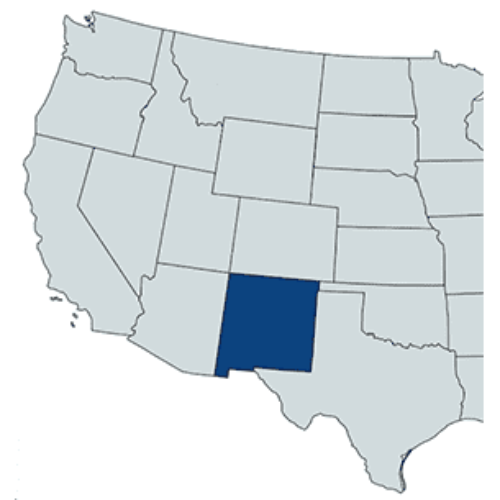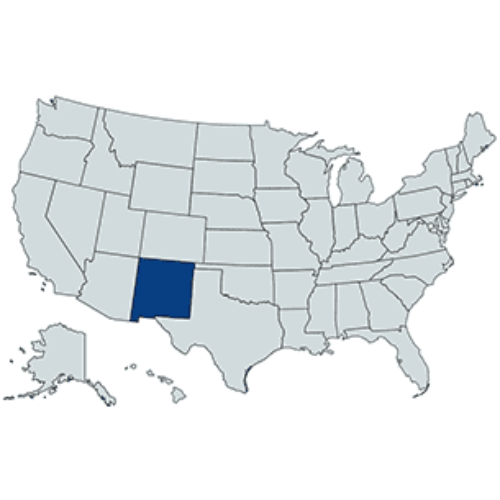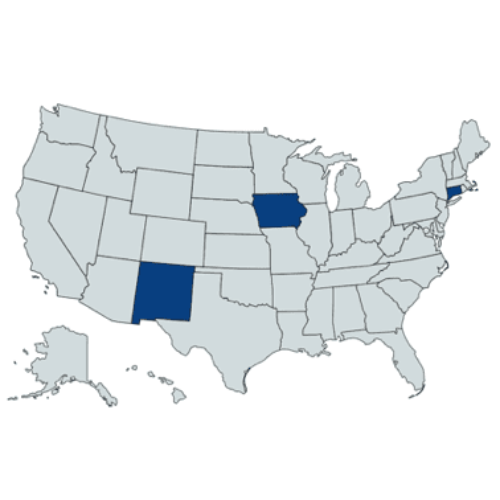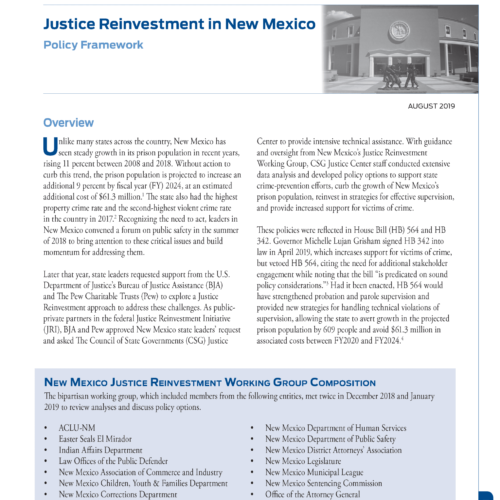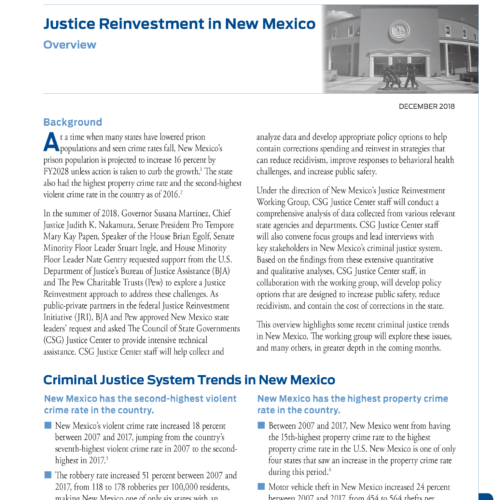Justice Reinvestment in New Mexico
The Problem
Unlike many states across the country, New Mexico has seen steady growth in its prison population in recent years. In 2018, the prison population was projected to increase 9 percent by 2024. The state also had the highest property crime rate and the second-highest violent crime rate in the country as of 2017.
How JRI Helped
In the summer of 2018, state leaders requested support from the U.S. Department of Justice’s Bureau of Justice Assistance (BJA) and The Pew Charitable Trusts (Pew) to explore a Justice Reinvestment approach to address these challenges.
Under the direction of New Mexico’s Justice Reinvestment Working Group, CSG Justice Center staff conducted a comprehensive analysis of data collected from various relevant state agencies and departments. CSG Justice Center staff also convened focus groups and led interviews with key stakeholders in New Mexico’s criminal justice system. Based on the findings from these extensive quantitative and qualitative analyses, CSG Justice Center staff, in collaboration with the New Mexico Justice Reinvestment Working Group, developed policy options that were designed to increase public safety, reduce recidivism, and contain the cost of corrections in the state.
These policies were reflected in House Bill (HB) 342 and HB 564. Governor Michelle Lujan Grisham signed HB 342 into law in April 2019, ensuring that victims of crime will have more avenues by which to receive support. She vetoed HB 564, however, noting that the bill “is predicated on sound policy considerations” but citing the need for additional stakeholder engagement. Had it been enacted, HB 564 would have strengthened probation and parole supervision and provided new strategies for handling technical violations of supervision, allowing the state to avert $61.3 million in costs and reduce the prison population by 609 people between 2020 and 2024.











